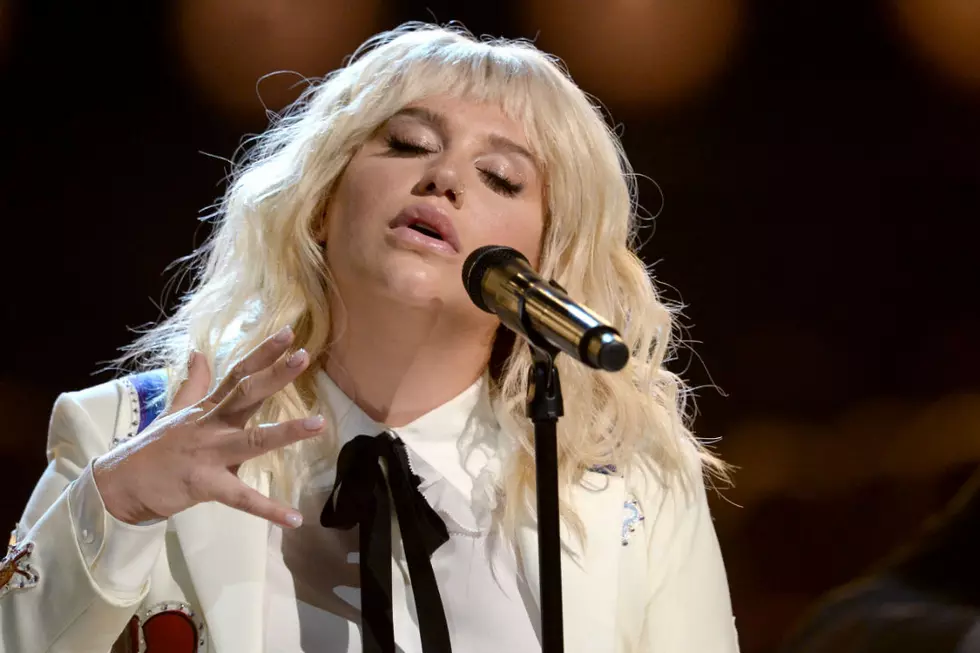
Susanne Sundfor Makes ‘Music For People in Trouble’: Interview
“Life is ready to happen and to unfold, and we’re just the vessel,” naturist Andres Roberts’ voice rises out of extraterrestrial flickers bouncing around like bleeding shards. The earthly vessel he speaks so profoundly on stretches out like a cat reaching up for the midday sun—and serves as the centerfold of Norwegian singer-songwriter Susanne Sundfør’s new studio album, Music for People in Trouble.
Rendered over the span of one year as she was scouring the globe, from North Korea to Nepal, Brazil to Iceland, ten tracks “flashing and dancing on the horizon,” as she whispers on the blissful “Reincarnation,” found her doing “whatever the hell [she] felt like."
In concrete terms, that meant discarding her usual excursions with synth-based pop music. Electronics fell away, and she was left with stunning piano and guitar, gloriously displayed on such crucial moments as “Good Luck Bad Luck,” a fragile, haunting confessional, and “Undercover.” She unleashed renewal in this earthier, looser approach, and often, her piercing vocal is moving. Exploring new worlds and new cultures left an indelible impression on her and her craft, also represented within the magnetizing, cinematic arrangements and the album’s overall dreaminess. “[The trips] made me focus on something other than myself; it made me curious and hungry for new impressions and new motives for my photography,” she says.
“It’s hard to pinpoint exactly how it affected my music, but all experiences are potentially inspiring for creativity. I didn’t travel to write; I traveled to take pictures, which to me is an important part of the album,” Sundfør notes of her sojourn, framed through the album artwork and booklet. Her expeditions then poured over into a revelatory admission "that emptiness is the place where things start to grow. Most of the universe is empty. So, I’m not afraid of that anymore."
Music for People in Trouble is among the year's most raw and evocative sets and encompasses life's purity, unfettered sorrow, hitting rock bottom and clawing one's way back to the top. Below, Sundfør reveals one of the most important moments from her cross-continental skips and talks astrology and the end of the world.
What was the most important moment from your trips abroad?
I remember sitting on a boat on the Xingu River, far away from everything I knew, and I was thinking how I wished for the journey to be over soon cause I missed my own bed. And then I thought how I always wish to be somewhere else, and when I’m there, I don’t really care. I just sat there looking at the river and the jungle and just experienced it, taking it in, and it was bliss.
How did life's inherently fast pace play out in the music, and how did you stay grounded in the process?
I think living a good life is about putting it in perspective. Love is important. Loving others. Loving what you do. I climbed up a mountain yesterday. I rarely go out or go hiking. It felt important, but I don’t know why. Maybe to feel a connection. I’ve been pondering these things the last few years. I guess some of these soliloquies partially ended up on the album.
What led you to travel the world?
I started taking pictures after reading Tomas Espedal’s photo book, Mitt Privatliv. I bought the same camera and started taking pictures of hotel rooms like he did. I got blood on tooth, as we say in Norwegian—I love that expression, it’s so primal and Vikingy. It means you get the taste of something you like, and it excites you. So I decided I wanted to do a photo project for the album where I would travel to interesting places and document them. In the end I would try and tell some sort of story about the world that somehow would relate to the album.
With "Reincarnation," you deal in the end of the world. What inspired that idea?
Well, the end of our world. The world will be just fine. We probably will, too. But sometimes it looks bleak. I think we need to sing soothing ballads instead of screaming at each other when things get rough. I personally think the song is more about light than about darkness.
From the beginning with "Mantra," you reference the moon and stars quite frequently throughout the album. How do you relate to celestial bodies?
I don’t know anything about astrology. I’m not a big fan [of it], to be honest. We all look up at these celestial objects, and I think we can give them the symbolic meaning we want them to have. All the objects in the song often have ominous or negative connotations in history. I wanted to give them a more positive meaning.
How did this album start, and how did it all piece together?
The first song I wrote was "Reincarnation." Then, "Mantra," and then "Undercover." Then, I wrote "The Sound of War." All the guitar songs I wrote at home in London. Then, I traveled to LA and wrote "Good Luck Bad Luck" and "No One Believes in Love Anymore." Then, back in London I wrote "Mountaineers." And then, I wrote "Bedtime Story" at a cabin in Woodstock. The last song I wrote was "The Golden Age." Jørgen Træen, who produced the album with me, composed the beautiful abstract music around the interview with Andres on the title track.
The arrangements feel more open than much of your previous work. You've spoken about not wanting to work with synths this time around, how did that impact your approach?
I wanted the human touch. I just didn’t feel like I could express what I wanted to convey on synths anymore, so I started playing the guitar and piano again.
Many of the songs feel larger-than-life, cinematic. What decisions went into what instruments you used and what mood you wanted to create?
Often when I want to arrange a song, basically dress it up, I think as if I’m creating a movie scene. I pictured witches and drones in a sky of fire on "The Sound of War." I pictured a tired drunk in a bar on "Good Luck Bad Luck." It’s often about creating a setting for an emotion. And then I just need to find the instruments that fit the scene.
Does art/music have an obligation to be a conduit for life's more brittle, urgent and powerful avenues?
I think art can be whatever it needs to be. Sometimes it needs to be the music that gets you to do the dishes, or the painting you put on the wall at home to make your living room pleasant. Or the music that makes you wanna dance when you’re at the club. Your favorite dress. Sometimes it needs to be deep; sometimes it needs to be shallow.
Music For People in Trouble is released September 8.
Best Albums of 2017 So Far:
More From PopCrush









